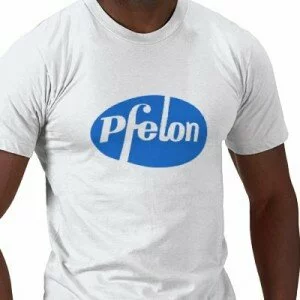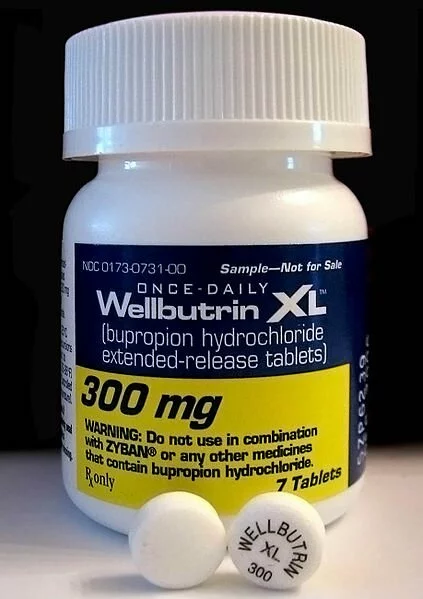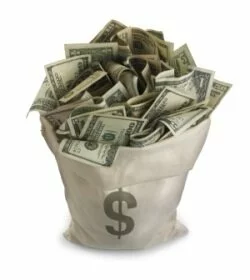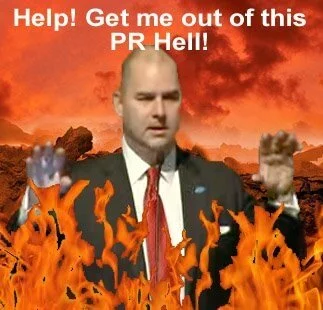
Buy Your Phizer Pfelon Tee Today!
Pfizer, the world’s largest drug maker, will pay a record $2.3bn (£1.4bn) civil and criminal penalty over unlawful prescription drug promotions, the US Justice Department announced today.
The department said the $2.3bn settlement included a $1.2bn criminal fine, the largest criminal fine in US history. The agreement also included a criminal forfeiture of $105m.
Hat Tip to our friend Jack at PharmaGossip ![]()
 Major depressive disorder affects approximately 15 million American adults in the U.S. in a given year, and a first pharmacological line of defense is often a prescription for an SSRI such as Prozac, Celexa, or Zoloft. (These drugs have been favored since the late 1980s for the treatment of depression as they are generally well tolerated, have fewer side effects than their predecessors the MAOIs, and help a great many people.)
Major depressive disorder affects approximately 15 million American adults in the U.S. in a given year, and a first pharmacological line of defense is often a prescription for an SSRI such as Prozac, Celexa, or Zoloft. (These drugs have been favored since the late 1980s for the treatment of depression as they are generally well tolerated, have fewer side effects than their predecessors the MAOIs, and help a great many people.)
However, people suffering from atypical depression — characterized by hunger and sleepiness, rather than loss of appetite and insomnia — may have different needs in an antidepressant and should discuss with their doctor options such as Bupropion (familiarly known by its GlaxoSmithKline trade name, Wellbutrin), which could help where popular SSRIs might fail.
That is because SSRIs — Selective Serotonin Reuptake Inhibitors — work on the neurotransmitter Serotonin, while Wellbutrin — an NDRI — is a Norepinephrine and Dopamine Reuptake Inhibitor. This change of focus in the affected neurotransmitter may make all the difference for those individuals who suffer depression in an atypical manner.
Atypical depression differs from regular, “melancholic†depression primarily in energy and appetite. It is often characterized by “reversed vegetative symptoms†such as over-eating (regular depressives have little appetite) and/or over-sleeping (regular depression is usually characterized by sleeplessness).It is estimated that up to 40% of people suffering from depression have atypical symptoms.
Wellbutrin reportedly has a more enlivening affect than the SSRIs, so it is often considered for those who are sleeping abnormally long amounts. (For this reason, it is not advised for those suffering anxiety or agitation.) It is also one of the only antidepressants that is not associated with weight gain, and for this reason is also suitable for atypical depressives who may be overeating.
Even successful users of SSRIs have reason to consider Wellbutrin. SSRIs have widely-known sexual side effects that trouble some patients, even if the SSRI is curing their depression. This may make them turn to their physician for refinement of the prescription. Says Ray Sahelian, M.D.:
Since bupropion raises dopamine levels, it actually can enhance sexuality rather than depress libido as do many SSRIs. Bupropion has been shown to have a favorable effect on sexual dysfunction. Several reports and small, short-term trials have examined bupropion as an adjunct or substitute for other antidepressants in sexually dysfunctional patients. This means that Wellbutrin is often prescribed for sufferers of atypical depression, but it is also prescribed as an add-on for people using SSRIs who would like to try to combat the sexual side effects of SSRIs.
In other words, Wellbutrin is often prescribed as an add-on to an SSRI for the express purpose of relieving some of the SSRI’s sexual side effects (usually loss of libido or functioning).
Depression is not the only condition that Bupropion has been approved to treat. In 1997, it was approved by the FDA as a smoking cessation aid under the name Zyban. And in 2006, Wellbutrin XL was approved as a treatment for Seasonal Affective Disorder. Because both Wellbutrin (prescribed for depression) and Zyban (prescribed for smoking cessation) are essentially Bupropion, patients should not take both at the same time; they would be doubling their dose.
Caution: The most well-known side effect of Bupropion is that it lowers seizure thresholds. Doctors have worked around this with lower dosages (it is highly dose-dependent) and controlled-release formulations. Still, those with seizure disorders should avoid Bupropion. Other common side effects are nervousness/ agitation and insomnia. As with any antidepressant, people suffering from increased depressive symptoms or thoughts of suicide should contact their doctor immediately.
Some formulations of Bupropion are available as generics in the United States and Canada.
U.S. Brand Names
- Budeprion SR®
- Budeprion XL®
- Buprobanâ„¢
- Wellbutrin SR®
- Wellbutrin XL®
- Wellbutrin®
- Zyban®
Canadian Brand Names
- Novo-Bupropion SR
- PMS-Bupropion SR
- RATIO-Bupropion SR
- SANDOZ-Bupropion SR
- Wellbutrin XL®
- Wellbutrin®
- Zyban®
 Well, actually, I’m sure there’s more than one thing. Like, for example, we can assume they both make backroom deals, and they both know that money talks.
Well, actually, I’m sure there’s more than one thing. Like, for example, we can assume they both make backroom deals, and they both know that money talks.
But there’s something else.
Both are unfairly trashing the legitimacy of licensed Canadian pharmacies — real, honest-to-goodness, brick-and-mortar pharmacies that have been inspected and approved to sell prescription medications to Americans by the Canadian government.
How are the Russians doing it? Through spam.
Much of the damage to the good name of Canadian pharmacies can be traced to a single criminal organization in Russia that calls itself “Canadian Pharmacy.â€
The group, which operates thousands of sites, sends as many as 60 billion spam e-mails per day. No doctors, no prescriptions, no consultations, no buildings, even — but they will ship you medications.
Some of these rogue pharmacies add metal shavings or other contaminants to the drugs they send out. In 2007, one Canadian woman was killed by pills laced with poisonous metals. The woman’s payments were traced to a Russian bank.
In other words, by sending out millions of spam e-mails, claiming to be Canadian, and then shipping dangerous products, Russian mobsters are giving some Americans the wrong idea about Canadian pharmacies.
Big Pharma, Friend of the Mob
So, how is Big Pharma assisting the Russians in impugning the good name of Canadian pharmacies? By cleverly attempting to link these Russian spam operations with legitimate, licensed drugstores — even though there is no link whatsoever.
Big Pharma and organizations that receive funding from Big Pharma, such as the National Association of Boards of Pharmacy (NABP) and others, have been spewing out op-eds and “reports” lately that say, for example, “90 percent” of pharmacy ads on the Microsoft, Google and Yahoo networks are by “rogue pharmacies.”
What they don’t explain is that, by their definition, all pharmacies based in Canada — even those explicitly approved by the Canadian government to sell prescription drugs to Americans — are “rogue.”
What nonsense. The major search engines run afoul of Big Pharma for one reason and one reason only: they make it easier for Americans to buy medications from Canada. And overall, the search engines have been very responsible in ensuring that only legitimate pharmacies are allowed to advertise, although occasionally a bad actor might slip through the cracks.
In other words, Big Pharma’s claims are utter nonsense. Unfortunately, some gullible members of the media have fallen for the pharmaceutical industry’s big-dollar PR campaign, hook, line and sinker.
Real Canadian Pharmacies
So, what are real Canadian pharmacies like? The ones that are inspected, licensed and government-approved?
I’ll give you just one example.
AdvCare Pharmacy bills itself as the “neighborhood pharmacy at your fingertips†— and that’s exactly what it is.
Staffed by a team of dedicated, Ontario-licensed pharmacists, AdvCare has an inventory of more than 20,000 prescription drugs and serves residents of both Canada and the United States.
If you want to see for yourself that AdvCare is no different from your own neighborhood pharmacy (except for the prices), you can visit this friendly corner pharmacy in person at its home in Markham, Ontario. The street address is on the Web site.
AdvCare is one of more than 25 duly licensed, completely legitimate online pharmacies in the eDrugSearch.com network.
So please — please — don’t buy the nonsense propagated by Big Pharma and its proxies like the NABP and others. Just because a pharmacy is Canadian doesn’t mean it’s a “rogue pharmacy.” If that were true, where would Canadians go for their own prescriptions?
Big Pharma’s argument is absurd on its face. But of course, that’s never stopped them before.
 The pharmaceutical industry, through its lobbying group PhRMA, has promised to cut drug prices for certain Medicare Part D recipients and others by $80 billion over the next decade. In return, the Obama Administration has promised not to reform the pharmaceutical industry — no new regulations, no Medicare negotiation for lower drug prices, no drug reimportation from Canada.
The pharmaceutical industry, through its lobbying group PhRMA, has promised to cut drug prices for certain Medicare Part D recipients and others by $80 billion over the next decade. In return, the Obama Administration has promised not to reform the pharmaceutical industry — no new regulations, no Medicare negotiation for lower drug prices, no drug reimportation from Canada.
Sound like a good deal to you?
Well, $80 billion sure sounds like a lot of money. But here are some things to think about –
- President Obama trumpeted the deal without indicating how or whether these savings could be guaranteed; the specific terms are not included in any of the bills in Congress.
- Some analysts estimate that only $30 billion of the $80 billion can be guaranteed.
- Since U.S. prescription drug prices have been rising at three times the rate of inflation, it is unclear whether the promised price cuts will actually reduce prices or simply slow their growth temporarily.
- In accepting PhRMA’s demand for no price negotiations, the government is forgoing what could be as much as $220 billion in savings over the same period, according to a report by the Institute for America’s Future, which matched drug price savings the government negotiated for the Veteran’s Administration.
- Americans spend $200 billion per year on prescription drugs — and rising (even with the $80 billion “discount”).
- We pay more for prescription drugs than any country in the world. The Congressional Budget Office found that drug prices in other countries average 35 to 55 percent below the prices in the U.S. But now that Obama has buckled on Canadian drug reimportation, Americans cannot take advantage of these bargains (at least according to the letter of the law).
- The pharmaceutical industry spends $100 million a year — $1 billion a decade — just on lobbying members of Congress.
- Even in the midst of a recession, Johnson & Johnson CEO William Weldon was paid $29,127,432 in 2008; Abbott Labs CEO Miles White made $28,253,387 and Merck’s Richard Clark made $25,073,555.
- Overall, Americans pay twice as much (or more) per capita on healthcare than all other Western countries, which in many cases have better health outcomes than the United States.
How’s that $80 billion sound now?
Sources: Nader, Redmond

I’ve guess I’ve finally come back to my senses.
After years of being cynical about our political system’s capability of doing anything but accumulating debt, I somehow thought Obama could make a difference. I thought, among other things, that meaningful healthcare reform was finally on its way.
But the system itself is more powerful than Obama … far more powerful.
I didn’t think it was possible that Congress could create a healthcare reform bill that I would oppose. I figured that any change would be a step in the right direction.
But then the White House caved in to Big Pharma on issues like Medicare price negotiations and Canadian drug reimportation. Big Pharma was basically assured that it could continue to charge monopoly prices for brand-name drugs without restraint.
That completely knocks out the promise of controlling skyrocketing prescription drug costs — which should have been a key pillar of healthcare reform.
Obama did this, clearly, as a political calculation. He did not think he could get a bill passed if he had both Big Pharma and Big Insurance against him. So he picked his poison — and Big Pharma agreed to support reform.
As a result, “healthcare reform” has become “health insurance reform.” The health insurance industry, like Big Pharma, is not a sterling example of the free market economy at work. That’s why you don’t see real price competition, and why health insurance companies focus instead on increasing their margins by not paying off claims. It’s also why a public option is necessary for there to be any chance of real insurance reform.
I don’t think Obama’s going to get the public option, either.
I think we’re going to get a bill passed that encourages/forces Americans to sign up for private insurance, and that continues to subsidize drug company profits. It will end up enriching both Big Pharma and Big Insurance. And it will cost us billions or trillions of dollars that we don’t have and must borrow from China.
Borrow and spend. That’s been the core “problem-solving” approach of both Democrats and Republicans over the past 30 years (with the exception of Bill Clinton, the only president to have balanced the budget during this period.) In fact, Obama’s “problem-solving” approach on healthcare is eerily similar to George Bush’s approach on Medicare Part D.
As former Secretary of Labor Robert Reich explains:
The White House confirmed it has promised Big Pharma that any healthcare legislation will bar the government from using its huge purchasing power to negotiate lower drug prices. That’s basically the same deal George W. Bush struck in getting the Medicare drug benefit, and it’s proven a bonanza for the drug industry. A continuation will be an even larger bonanza, given all the Boomers who will be enrolling in Medicare over the next decade. And it will be a gold mine if the deal extends to Medicaid, which will be expanded under most versions of the healthcare bills now emerging from Congress, and to any public option that might be included. (We don’t know how far the deal extends beyond Medicare because its details haven’t been made public.)
Let me remind you: Any bonanza for the drug industry means higher health-care costs for the rest of us, which is one reason why critics of the emerging healthcare plans, including the Congressional Budget Office, are so worried about their failure to adequately stem future healthcare costs. To be sure, as part of its deal with the White House, Big Pharma apparently has promised to cut future drug costs by $80 billion. But neither the industry nor the White House nor any congressional committee has announced exactly where the $80 billion in savings will show up nor how this portion of the deal will be enforced. In any event, you can bet that the bonanza Big Pharma will reap far exceeds $80 billion. Otherwise, why would it have agreed?
Exactly.
Isn’t it odd, in a day when the political parties are supposedly so different, and people are shouting about non-existent “death panels” at town hall meetings, that the underlying reality is that the political parties are actually so similar? That the Democrats’ “solution” for healthcare may simply be an expanded version of the Republicans’ “solution” for seniors who can’t afford their prescription drugs — Medicare Part D?
Democrats and Republicans enjoy the perks of power. But they ultimately don’t run Washington. They both must answer to the same “paymasters,” as consumer advocate Ralph Nader calls them. Corporate interests.
Show me a grassroots movement that takes on corporate power, and I’ll show you a third political party. You won’t find it within the current two-party system. When we next “water the tree of liberty with the blood of tyrants,” as Jefferson put it, those tyrants will be giant multinational corporations, not their trembling lackeys who hold political office.
Image source

It hadn’t really occurred to me, until I read a great rant by Jen Huntley in the Reno News & Review the other day, just how completely the web of Big Pharma envelops our lives.
In other words, Big Pharma doesn’t just provide us drugs when we get sick. Big Pharma also helps us get sick in the first place. It’s the perfect racket: they’ve got us coming and going.
As Jen writes:
While those of us with adequate or good health insurance looked the other way, health care became a giant profit-making machine for insurance companies and hospitals—but the pharmaceutical industry really takes the cake.
Not only have they bought the government with profits built on taxpayer subsidies, but other reports also reveal the enormous role of drug companies on our food supply. Seventy percent of all antibiotics are fed to livestock to keep them alive long enough to reach market weight in crammed feeding lots. As Prevention magazine reported last month, the superbug MRSA—a deadly, drug-resistant form of staph—is now present in our food supply.
Great. Taxpayer-subsidized drugs in our food make us sick—we go to the hospital and get fed more drugs. With its vast and powerful lobbying system, the pharmaceutical industry writes both agricultural and medical policy to feed its own bottom line. [emphasis added]
Just how serious is the MRSA threat created by the overuse of antibiotics in pigs and other livestock? Chances are, we won’t find out until it’s too late. Here’s an excerpt from an MSNBC.com report:
Until recently, the CDC has acknowledged the presence of MRSA in meat but downplayed the danger … One reason the CDC and the National Pork Board must guess about transmission rates — and why we don’t know exactly how many MRSA-related infections occur — is that the federal government doesn’t collect data on MRSA outbreaks, says Karen Steuer, director of government operations for the Pew Environment Group. According to the US Government Accountability Office, there’s no testing for MRSA on farms. And the National Antimicrobial Resistance Monitoring System tests just 400 retail cuts of meat each month for four drug-resistant bacteria — which don’t include MRSA.
And yet, according to Food Poison Journal, recently published research shows MRSA was present in nearly half of pigs in a study of U.S. pig farms.
Fortunately, Congress finally appears to be taking action against the overuse of antibiotics in farm animals. The FDA is recommending the following actions, which have been endorsed by the AMA (but opposed by the National Pork Producers Council, among others) –
- Phasing out and banning the use of antimicrobials for non-therapeutic (i.e. growth promoting) use in food animals.
- Immediately banning any new approvals of antimicrobials for non-therapeutic uses in food animals and retroactively investigating antimicrobials previously approved.
- Strengthening recommendations in FDA Guidance #152 which requires the FDA determine that the drug is safe and effective for its intended use in the animal prior to approving an antimicrobial for a new animal drug application.
- Facilitating the reduction in industrial farm animal production use of antibiotics and educating producers on how to raise food animals without using non-therapeutic antibiotics.
We’ll see if this recommendation goes through … or if it dies on the vine like Canadian drug reimportation and other measures popular with the public, but unpopular with powerful vested interests.
Think about what will happen if MRSA continues to spread from hospitals — where it currently is at dangerous levels — into the general population. It will actually solve some big problems for Big Pharma.
As we’ve reported here before, a number of supermarket chains and other retailers are now giving away common antibiotics for free. The reason is that patents on these drugs have long since expired, so the prices for these drugs are very low. It’s worth it to the retailers to give them away in order to get you into their stores.
I have a friend who recently acquired an infection caused by MRSA, which as we know is not treatable by those “free antibiotics.”
He had to purchase a special antibiotic called Zyvox (linezolid) to treat it. The price for Zyvox at his corner drug store was $1,400. Even after insurance, he still had to pay $400 — for a 10-day supply.
If you’re Big Pharma, that sure beats free, doesn’t it?

Can I make a suggestion to you? When some political blowhard on TV or the radio tells you something, don’t automatically believe it. Do your research to learn the facts for yourself, OK?
You see, pundits and politicians lie. And they hope you’ll be so accepting of their carefully crafted talking points that you won’t bother to investigate an issue for yourself.
A great example is high drug prices. America has — by far — the highest prescription drug prices in the world. But the pharmaceutical industry, aided by various demagogic pundits and alleged “think tanks,” has done a masterful job of convincing a sizable minority of Americans that these high prices are not the pharmaceutical industry’s fault, or our government’s fault — but instead, the fault of other countries.
Specifically, they argue that drug prices in Canada and Europe are too low, because those countries are “socialist” and put price controls on medications. That leaves the poor pharmaceutical industry to recoup all its enormous R&D costs by charging your grandma $100 for a bottle of pills that everyone else on the planet pays $40 or less for.
You see, America believes in the “free market.” America believes in “competition.” And that’s why America’s drug prices are correct — because they’re set by the “free market,” not by “socialist” price controls.
What a load of rubbish.
When it comes to prescription drugs, America is anything but a “free market.” In a free market, if a company developed a new drug, its competitors could develop competing drugs, and prices would quickly come down to a price set by the market.
That doesn’t happen in America. In America, we do have a form of socialism; it’s called “corporate welfare.”
When a new drug is developed, our government gives the drug company so-called “patent protections.” This means other companies are not allowed to compete with the drug developer for a period of several years.
Then, we allow these same drug companies to game the system, enabling them to extend their patents indefinitely by creating “new and improved” versions of the same drugs ad nauseum.
Finally — and this might be the most “ad nauseating” thing of all — once a drug company’s patent expires, our government allows drug companies to pay off generic suppliers to NOT make low-cost competing drugs.
Does ANY of this sound like a “free market” to you?
You can thank our lawmakers in Washington — and their friends, the pharmaceutical lobbyists with briefcases full of campaign contributions — for creating this system. It’s not a “free market” because Big Pharma has bought and paid for it.
All of this is to preface telling you that your outrage as consumers — despite the best efforts of Big Pharma and its water carriers to tamp it down — is finally having an impact.
President Obama is working with Congress to make it illegal for drug companies to pay off generic drugmakers. As U.S. News & World Report explains:
The administration wants to ban makers of brand-name drugs from shelling out “pay-for-delay” settlements to generic drugmakers, a practice that creates a financial incentive for generic drug companies to keep their much cheaper drugs off the market.
“If it’s legal for a brand to pay a generic to sit out, why wouldn’t it?” Federal Trade Commission Chairman Jon Leibowitz explained today at a Center for American Progress event. “And if a generic drug company is allowed to make more money by not competing than by going to market, isn’t that a good business deal for the company and its shareholders? The answer is, of course it is.”
Brand-name drugmakers have exclusive rights to their drugs only for a limited time. Generic drug companies can enter the market once the original patent is expired, “invented around,” or invalidated. This is when the elbows come out, as brand-name drug companies in recent years have spent millions paying their generic rivals to drop patent challenges. It’s often better business for the generic drug company to take the money than to continue the challenge and then put the drug out there. “Clearly these are win-win deals for the companies, but they leave consumers footing the bill,” says Leibowitz.
The administration is solidly behind stopping this, and there are bills making their way through the House and Senate that would do just that. If the practice ends, American consumers could save $35 billion over a 10-year period, according to Leibowitz. The government’s savings could be $12 billion over 10 years since it pays such a hefty chunk of the nation’s prescription drug bill. “And these assumptions are quite conservative,” adds Leibowitz.
Someone once told me during an argument that I was entitled to my own opinions — but not to my own facts.
You can say “yes” to high drug prices if you want to. But don’t ever say that high drug prices are set by the “free market.” That’s a load of hooey.
Image source
 You probably didn’t see it in the news — since it got about 1/1000th of the coverage received by Sarah Palin spatting with David Letterman and Spencer and Heidi quitting “I’m a Celebrity … Get Me Out of Here” — but a noteworthy legal settlement occurred last week.
You probably didn’t see it in the news — since it got about 1/1000th of the coverage received by Sarah Palin spatting with David Letterman and Spencer and Heidi quitting “I’m a Celebrity … Get Me Out of Here” — but a noteworthy legal settlement occurred last week.
A major drug wholesaler, McKesson Corp., and two drug-price publishers have settled a class-action lawsuit accusing them of inflating drug prices. Here’s an explanation of what they did, according to the suit:
“Prescription drugs often are priced using certain benchmarks. The most common pricing benchmark is called the Average Wholesale Price (“AWP”). AWP is often used in determining how much insurance companies and other Third-Party Payors will reimburse for these prescription drugs and the co-payment price that some consumers pay for them. The lawsuit claims that two Defendants, McKesson Corporation (“McKesson”), a large drug wholesaler, and First DataBank (“FDB”), a publisher of drug data, wrongfully inflated the mark-up factor used by FDB to determine the AWP for certain prescription drugs (“Subject Drugs”). The lawsuit claims that, as a result, many drug purchasers overpaid for these drugs.”
The defendants have agreed to pay out $350 million to reimburse patients, insurers and employers. And — here’s the really interesting part — the court has ordered the prices of hundreds of brand-name drugs to be cut by about 4 percent, which, theoretically, could result in $1 billion in drug savings the first year alone.
But don’t count on dollars dropping from the sky in your direction. Analysts told the Wall Street Journal that drug pricing is so “opaque and complex, patients won’t likely get meaningful and long-lasting relief.”
I’m afraid I have to agree that most Americans will never see a dime of savings from this settlement. But let me break down this “opaque and complex” thing, because it’s really neither.
Many of these brand-name drugs have patents that give them pricing monopolies. They can throw a dart at the board and make the price whatever they want.
So, the court orders a 4 percent price cut? Whoa!
It’s not uncommon for drug makers to raise their prices by five times that in a year. What’s another 4 percent thrown in? Who would know? And who are we kidding?
Opaque, huh?
To find out if you are eligible to collect from the $350 million settlement fund, go here.
And for a complete list of the overpriced drugs, which include Lipitor, Lamisil, Monistat, Cipro, Ultracet, Zofran and many, many more, go here.

Motley Fool has an interesting take on the public’s current perceptions of the pharmaceutical industry — and the reasons behind those perceptions:
Is there a pill to cure bad PR? Not that I know of, but the health-care industry, and pharma in particular, could certainly use one. The sharply rising cost of prescription drugs makes pharma look bad. Consumers don’t care that research and development costs megabucks and that companies only have a limited time to recoup those costs before a drug begins to experience generic competition. All they see is the hit to their pocketbook.
Direct-to-consumer advertisements don’t make things better. Companies run them because they work, but the ads aren’t exactly public relations-friendly, because they flaunt the fact that pharma is making money off of customers’ illnesses. The worst part is that life-saving drugs, like cancer treatments from Bristol-Myers Squibb (NYSE: BMY) or Eli Lilly (NYSE: LLY), where the companies might be able to score some brownie points for saving lives, typically don’t have direct-to-consumer advertisements, because ads targeted to doctors are more effective.
Sorry, but I can’t feel sorry for Big Pharma’s plight — and can’t buy into the Fool’s logic, either.
Here’s why:
- The problem with direct-to-consumer ads is not, as the Fool suggests, that they remind people that drug companies make money. The problem is that Big Pharma spends more on these ads than it does on ALL of its research and development combined. So is R&D really what’s driving up drug costs? As a brief history lesson, direct-to-consumer advertising was only made legal in the U.S. after much Big Pharma lobbying (read: palm-greasing). Even today, direct-to-consumer advertising is only legal in one other developed country: New Zealand.
- The problem with R&D is not that it costs “megabucks” to produce life-saving new drugs, as the Fool suggests. It’s that the bulk of R&D dollars are devoted not to creating innovative new drugs, but to creating dubious “enhancements” to existing blockbuster drugs in order to extend patent protections. Big Pharma R&D today is the equivalent of navel-gazing — it’s completely inward-looking. It’s focused on gaming the FDA and boosting financial statements, not solving the world’s health problems.
- The problem with patents is not that the public doesn’t understand that Big Pharma needs this monopoly protection to “recoup their costs,” as the Fool suggests. It’s that Big Pharma has used these government-awarded monopolies to generate profit margins that would make Exxon Mobil blush.
So, will Big Pharma ever acknowledge these “PR” issues and attempt to honestly address them? I doubt it.
The myopic culture at Pfizer, Glaxo and the other big pharmaceutical companies is no different from that at AIG or GM, where executives can’t understand why people should be upset that they are paying out billions in bonuses, millions to remodel the CEO suite, or thousands to fly private jets to Washington ask Congress for money.
If you want to know what Big Pharma thinks of its bad PR, look no further than this video featuring Ray Kerins, Pfizer’s global PR chief (pictured above.) As John Mack at the Pharma Marketing Blog summarizes Kerins’ perspective:
Kerins finds it incredible that despite making products designed to save lives and cure diseases, the drug industry enjoys such low esteem among the public. “How in the hell do we have such a bad reputation?” was his way of expressing it. “It makes no sense.”
Well, he doesn’t answer that question directly — at least not in this short video clip — although he blames pharma PR people for not wining and dining journalists enough, which is traditionally what PR is all about.
That’s right — Big Pharma’s best idea for fixing its bad PR is to wine and dine journalists in the same way they wine and dine doctors with their army of pharma cheerleaders.
Oh, brother.
John proceeds to explain what he thinks the real PR problem is — and offers some ideas for improving the industry’s image:
Speaking as a consumer — the end user of pharmaceutical products — I say that pharma doesn’t do enough to “engage and educate” me. More than that, I hate to see that some people cannot afford drugs and I hate it when pharma tries to keep drug prices high — as, for example, when it prevented Medicare from being able to negotiate prices as part of the Part D program.
Pharma needs to give some free lunches to us consumers — more discounts on co-pays, for example. Expand its Patient Assistance Programs to include unemployed people. That sort of thing. In other words, do more to help Americans get through these harsh economic times and THEN wine and dine the journalists — better yet, blog about it!
Some good recommendations — but don’t hold your breath, John.
(Image via Pharma Marketing Blog)
 The AARP’s annual report on prescription drug prices, released last week, reveals that pharmaceutical manufacturers raised prices on the most popular brand-name drugs by 8.7 percent in 2008 — well over twice the rate of inflation.
The AARP’s annual report on prescription drug prices, released last week, reveals that pharmaceutical manufacturers raised prices on the most popular brand-name drugs by 8.7 percent in 2008 — well over twice the rate of inflation.
According to the AP:
AARP’s report highlighted growing costs of what it said were the 219 most widely used brand-name drugs.
Among the drugs that saw the biggest price increases in 2008, according to AARP: Prevacid, for acid reflux; Wellbutrin, for depression; and Lunesta, for sleeping.
Prevacid went up by 30 percent, Wellbutrin by 21 percent and Lunesta by 20 percent.Financial analysts have attributed some of the increases to drug makers attempting to boost profits amid an economic downturn as they confront the prospect of congressional action on health care that could change the marketplace.
One of the interesting notes in the story is the presumed rationale for the huge price increase for Prevacid:
Some brand-name drug prices are increased shortly before their patents expire and they become available as generics. Prevacid, for example, is going off-patent in November.
Let us put that another way for you. Prevacid’s manufacturer was given a monopoly that allowed it to charge whatever it wanted for the drug. With that monopoly finally close to expiration, despite all efforts to extend it, the manufacturer decided to hike prices another 30 percent just to milk the drug for all the profits it can — because it can.
The AARP’s public policy director, John Rother, advocates that Americans purchase their medications from safe and licensed Canadian pharmacies, among other remedies, to help counter rising U.S. drug costs.
-
Search Blog Posts
-
Watch our YouTube Video
-
-
Trending Content
-

-
Categories
Big Pharma Buy prescriptions online Canadian drugs Drug costs Drug reimportation Drug safety eDrugSearch.com FDA Health 2.0 Healthcare100 Healthcare blogs Healthcare solutions Low-cost drugs Medicare Part D Merck Online pharmacies Online pharmacy safety Pfizer Pharma bloggers Pharmaceutical companies Pharmaceutical marketing Pharma cheerleaders Prescription drug abuse Prescription drug prices Prescription drugs Prescriptions Wal-Mart drug plan -
Blogroll
- Bullet Wisdom
- Bulverde Business Directory
- Christian Counseling San Antonio Tx.
- Christian Schools in San Antonio Texas
- Christian Social Network
- Christians United for Israel
- DrugWonks.com
- Eye on FDA
- GoozNews
- Health 2.0
- Hunting Forum
- In the Pipeline
- Jesus Christ Our King
- John Hagee Ministries
- Kevin, M.D.
- Local Search Marketing
- My $299 Website
- Pharm Aid
- Pharma Marketing
- PharmaGossip
- Pharmalot
- San Antonio Asphalt
- San Antonio Life Insurance
- San Antonio Pressure Washing
- Storage New Braunfels Tx
- Texas Wildlife Supply
- The Angry Pharmacist
- The Health Care Blog
- The Peter Rost Blog
- World Vision
-
Tags
big pharma Canadian drugs canadian pharmacies canadian pharmacy consumer reports craig newmark divine healing Drug costs drug prices Drug reimportation eDrugSearch.com FDA Fosamax Generic drugs healing scriptures Health 2.0 healthcare reform Hypertension Jehova Rophe Jesus Christ Lipitor Metformin miracles nabp online pharmacy dictionary online prescriptions osteoporosis peter rost Pharmacies pharmacists pharmacychecker pharmacy spam phrma Prescription drugs prescription medication Proverbs 3:5-8 reimportation relenza Roche saving money SSRI swine flu Tamiflu The Great Physician The Lord our Healer -
Recent Tweets
- New blog posting, How to Get the Cheapest Prescription Medications - http://t.co/iRBgRlYnsQ [#]
- Canadian Pharmacy | Canadian Pharmacies | Online Pharmacy Reviews: http://t.co/s51v4jpoCO [#]
- JanDrugs Reviews and Ratings at http://t.co/UnEmxPbzFa: http://t.co/zMR4qGA7o1 [#]
-
Archives
-
Recent Comments
- Scott McGarvey on How to Get the Cheapest Prescription Medications
- Heather Sturges on What is the Difference Between Effexor and Cymbalta?
- Lupe Machol on Cost of diabetes drugs has nearly doubled
- Manpower For Hospital In Pune on Why is Medicine Cheaper in Canada?
- Jen on How a Canadian Pharmacy Can Help You Offset Drug Price Hikes